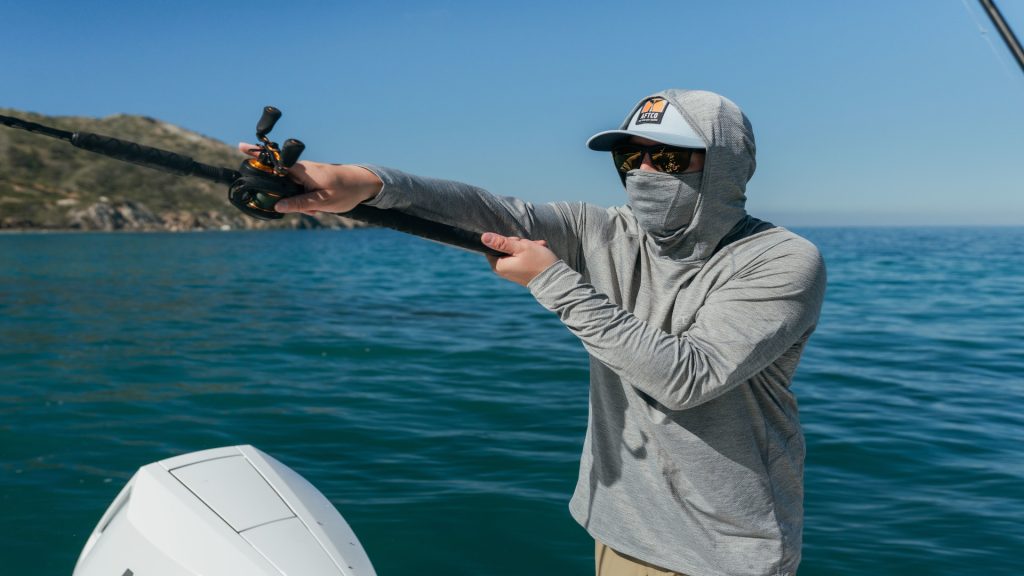In his 1986 cult classic book Trout Bum, author and fishing guru John Gierach expressed his disdain for bulging vests and packs full of frivolous angling gear. Everything a bum like him needed for a day on the water, he insisted, should fit in the pockets of a fishing shirt. Rod aside, of course!
This advice, almost fifty years old, is the first reference I can find of a technical, fishing-specific shirt. Perhaps to Gierach’s dismay, time has not seen a reduction in the amount of frivolous fishing gear circulating on the markets. Many “must have” gadgets are, as they have always been, presented to catch anglers, and not fish.
But technical fishing shirts, like sonar, PVC fly lines, chemically sharpened hooks, and graphite rods, have proven to be more than a splashy advertisement in the annual catalog. They’ve demonstrated staying power in a fickle market. Anglers by the thousands are still wearing pocketed fishing shirts, even if those pockets aren’t being relied on as primary tackle storage. In this article, we sat down with AFTCO Design Director Jillian Hidalgo to find out how anglers can differentiate high-quality fishing shirts from cheap ones.
Which Features Make The Best Fishing Shirt
It may not look like it when it’s hanging up on the rack, but a fishing shirt is a surprisingly complicated piece of equipment. People like Jillian ask a lot out of a piece of fabric. It has to be light enough to breathe, but also block UV rays from your skin. Making a durable, breathable, stain-resistant, comfortable, and durable shirt is harder than you might think, but it starts with choosing the right fiber.
Fishing Shirt Material
Most fishing shirts are made out of some sort of polyester blend for a variety of reasons, according to Jillian.
“Polyester is really great,” she says, “because it doesn’t necessarily stick to your skin, if the knit is correct. And it wicks moisture off of your body, which in turn helps keep you cooler. When you get soaked in a cotton shirt, you just get sticky, and then you just end up feeling hotter. Right? So while cotton is really good at getting moisture off of your body, and that feels good at first, cotton holds onto that moisture. And that’s not what you want, because that water will heat up and make you feel hotter. So you want to get that off of your body.”
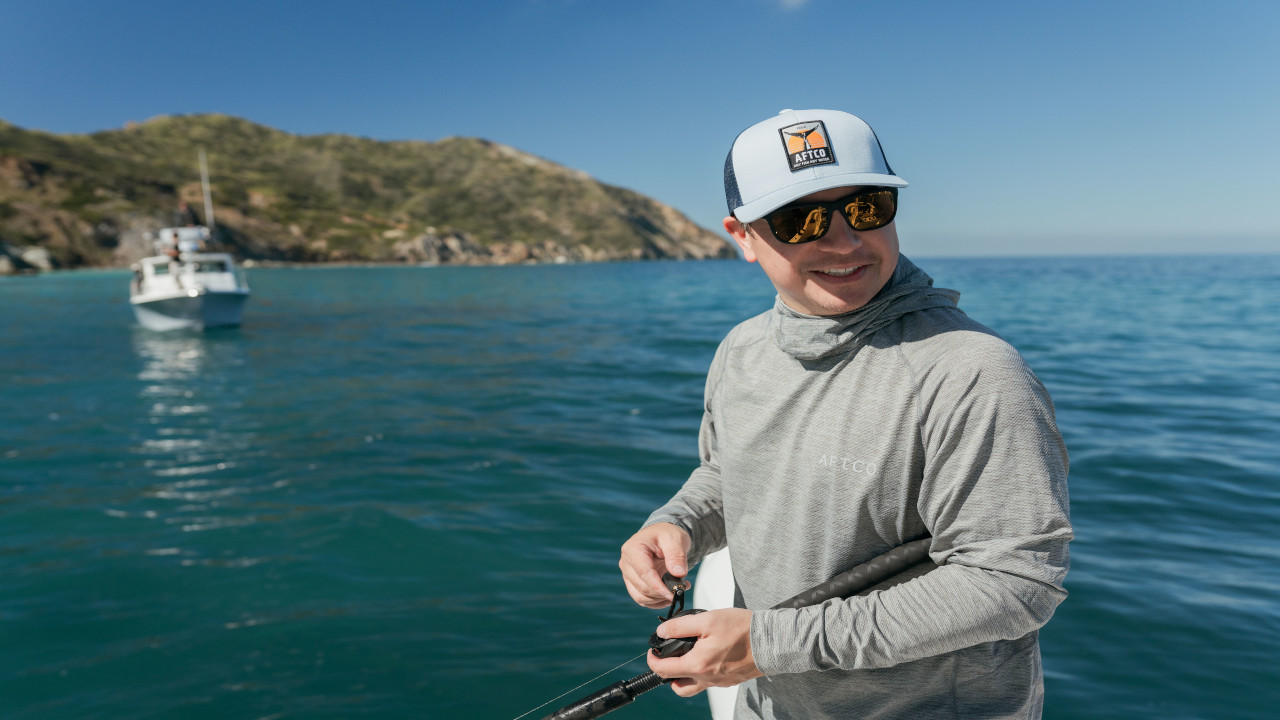
While polyester wicks moisture better than cotton, cotton and other natural fibers tend to feel better on your body, at least until they soak through. Some manufacturers are turning towards bamboo fibers in an attempt to find an ideal middle ground between the comfort of natural fibers and the wicking and quick-drying capabilities of polyester. Bamboo fiber shirts, so the pitch goes, are natural, eco-friendly, soft, comfortable, quick-drying, and moisture-wicking. But according to Jillian, the “eco-friendly” part is a bit of a stretch.
“Bamboo fiber” is typically marketing-speak for rayon, sometimes referred to as viscose or artificial silk. These end-products do technically use bamboo, but the treatment process to convert the raw materials into the finished product is extremely chemical-intensive.
“It’s an amazing fiber,” says Jillian. “It has a very natural, cooling touch. But production is a very intense process. If you’re just going after the performance, then it’s doing its job. But at AFTCO we have a history of conservation and we do a lot of work to make sure that we’re not greenwashing anything on our end.”
“We want to make sure that we’re doing right by our waterways with the fabric that we use,” she continues. “So take for example our Ocean Bound shirt, it’s made of REPREVE® Our Ocean™ recycled polyester, which is a recycled polyester that is specifically plastic that was headed from waterways into the ocean. So we’ve grabbed up that plastic, and instead of making a huge garbage patch in the middle of the ocean, it’s made into a shirt. And we mix that polyester with Tencel, which is a wood pulp-derived fabric. Adding Tencel gives you that soft, cottony feeling, but it wicks 30-40% better than cotton. So with our Ocean Bound shirt you get that soft, natural feel, but it’s blended with the performance of polyester and a bit of spandex.
What Makes A Fishing Shirt UV Resistant?
You can definitely feel the difference between a cotton shirt and a polyester one on a hot day, but something that I’ve always wondered about is the UPF rating on shirts. “What’s the difference,” I asked Jillian, “between a UV-resistant shirt and all the other shirts on the rack?”
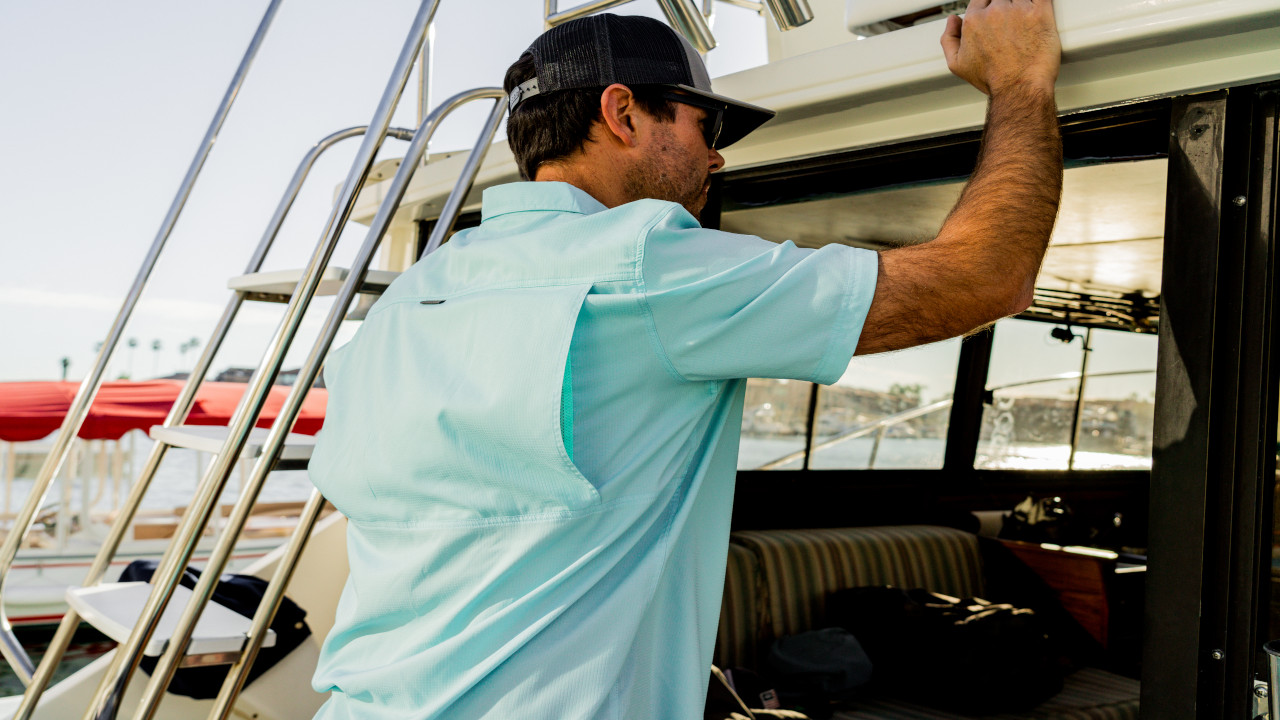
“It’s about how much light gets through the fabric,” she replied. “All fabrics block at least a little light, but if you hold a regular old cotton t-shirt up to the light, or a typical dress shirt, a lot of times you’ll be able to see through it. Compared to a polyester shirt, which lets very little light through.”
So how high of a UPF rating do you need? According to Jillian, UPF 30 is the absolute minimum anglers should look for, with UPF 40 being better for serious anglers. UPF 40-rated garments protect you from 97-98% of the sun’s rays, making them about the equivalent of SPF 30 sunscreens.
Fishing Shirt Breathability And Ventilation
You may notice UPF 50-rated shirts. These garments do provide even more sun protection, but anglers should keep in mind that the more light a garment blocks, the harder it is for it to let air and moisture pass through it. This doesn’t mean that a UPF 50-rated shirt can’t be breathable, just that it requires a little extra engineering.
“You can end up with very sleek fabrics,” Jillian explains, “and to offset that something that AFTCO uses is Air O Mesh. Which is where we manufacture air holes in this dense fabric that allows air to come in, but they’re pinholes and they’re placed in areas where you don’t get as much sun exposure. So you get that UPF 50 rating, but it’s technically a mesh fabric. It can be tricky to achieve that high rating and still get airflow. It’s a fun little thing you have to solve for.”
Durable Fishing Shirts
Due to the inherent strength of polyester fiber and the tight weave of the garments, technical fishing shirts are surprisingly durable. They feel light duty, but they resist cuts, snags, and abrasion pretty well. Polyester is, in Jillian’s words, “tried and true,” for angling purposes.
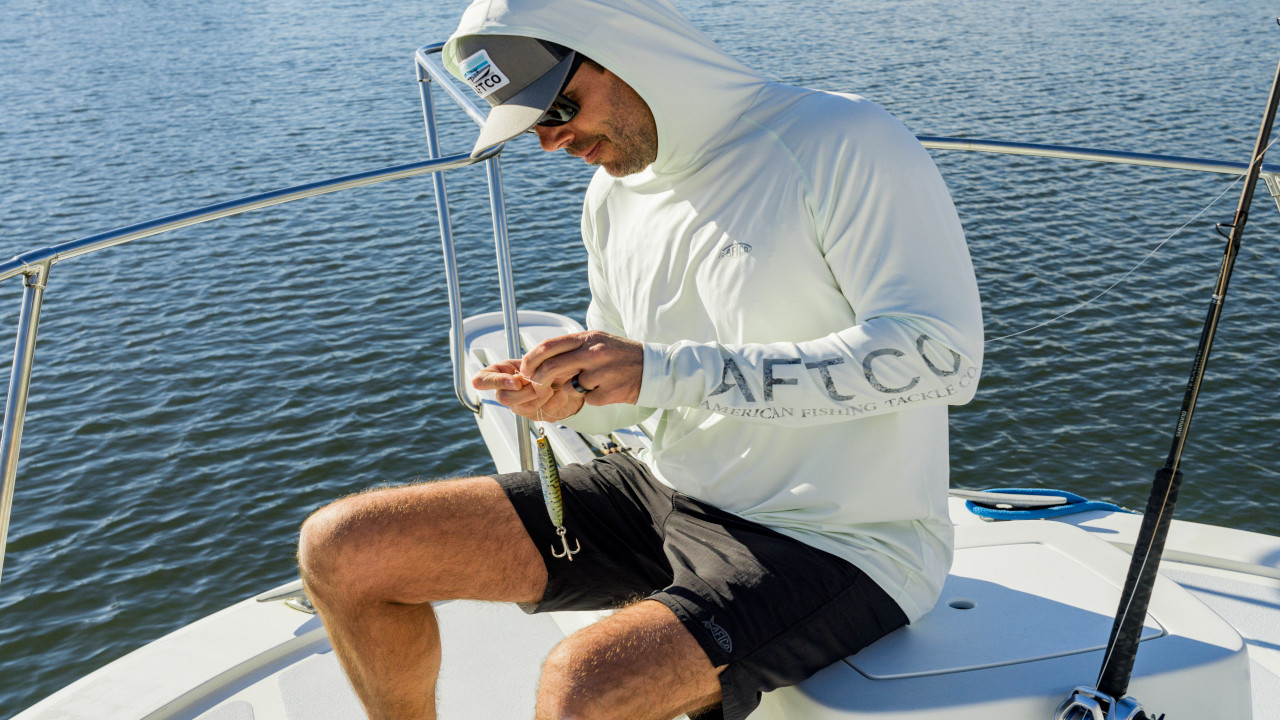
In addition to being durable, polyester is also very stain-resistant compared to natural fibers. Some AFTCO shirts improve this stain resistance with the application of a Durable water-repellent (DWR) treatment during manufacturing. DWRs give a garment a level of water resistance but also make it much easier to wipe away fish blood, spilled drinks, and other mishaps. As always, though, there’s a tradeoff. A DWR typically has a small negative effect on a garment’s breathability.
Button-Up Fishing Shirts Vs Hooded Fishing Shirts
Choosing between button-up fishing shirts and hooded fishing shirts comes down to personal preference and the specific needs of an angler, as both styles offer unique benefits and potential drawbacks. Button-up fishing shirts are a classic choice, known for their versatility and ease of wear. These shirts often feature a front button placket that makes them easy to put on and take off. They are typically designed with a collar that can be turned up to protect the neck from the sun, and their structured fit allows for easy layering over t-shirts or under jackets. Many button-up fishing shirts also come with multiple pockets, which are handy for storing small items like bait, hooks, and sunglasses. However, they may not offer as much coverage for the head and neck compared to hooded options.
On the other hand, hooded fishing shirts provide excellent protection from the sun and elements, thanks to the added coverage of the hood. This feature is particularly beneficial for anglers who spend long hours on the water under direct sunlight, as it can help prevent sunburn on the head and neck. Hooded fishing shirts often come with integrated UV protection and are made from lightweight, breathable materials that wick moisture and keep the wearer cool. However, they might be less versatile than button-up shirts because the hood can get in the way when not needed, and they typically have fewer pockets.
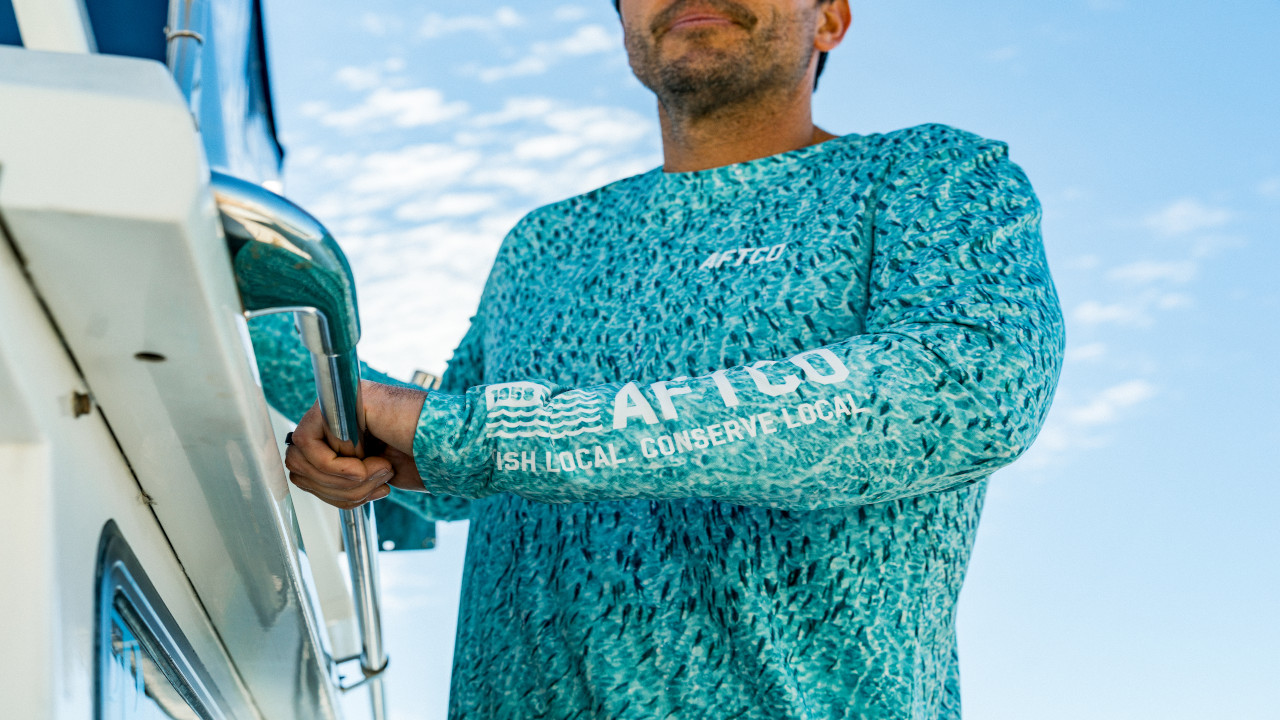
Personally, the author favors collared, button-up fishing shirts as “daily driver” apparel or for quick fishing trips. Many button-up fishing shirts are formal enough for laid-back office environments or weekday dinners at casual restaurants. Button-ups shine when you’re squeezing in quick trips before or after work, or for casual outings.
But if you’re going to be out on the water all day, hooded fishing shirts are tough to beat. The hood is especially important if, like the author, you have an aversion to both sunscreen and goofy-looking wide-brimmed hats. A hood is out of sight and out of mind until you need it, but can save your ears and the back of your neck when the sun is really beating down.
Final Thoughts On Fishing Shirts
While the fishing gear market has expanded with countless gadgets and gear, the humble fishing shirt has stood the test of time, evolving into a highly technical piece of apparel. Designers like Jillian Hidalgo at AFTCO have gone to great lengths to blend functionality with comfort, ensuring that modern fishing shirts meet the demanding needs of today’s anglers. These shirts are no longer just about storing gear in their pockets; they are about providing protection from the elements, comfort in various conditions, and supporting conservation efforts through sustainable materials. Whether it’s the moisture-wicking capabilities of polyester, the comfort of natural fibers like bamboo and Tencel, or the advanced engineering of UPF ratings and breathability features, it’s clear that a lot of thought and care go into designing these essential pieces of fishing attire.

